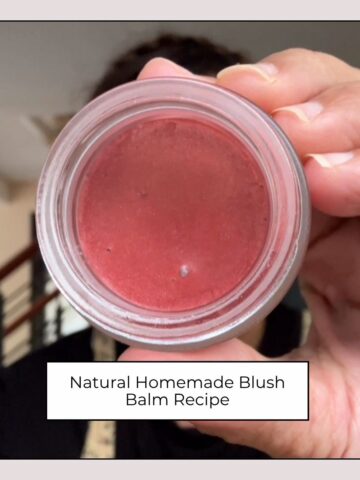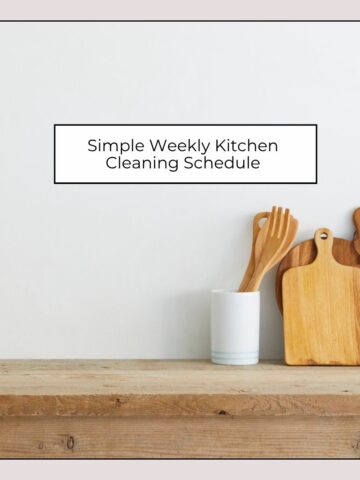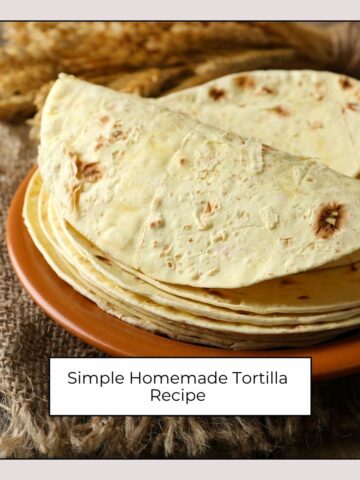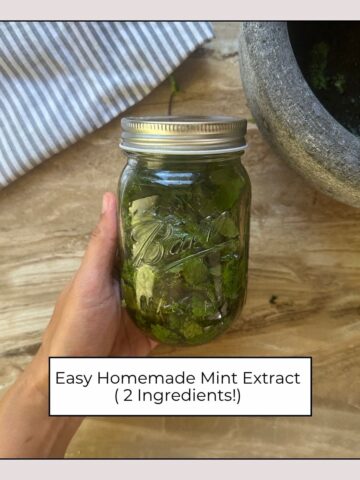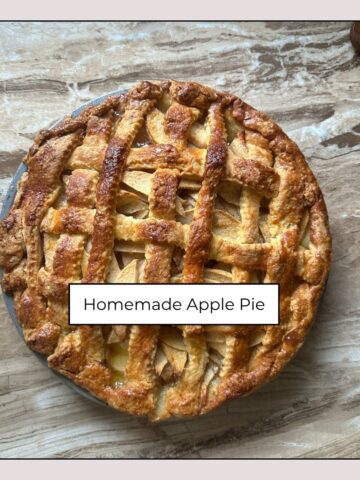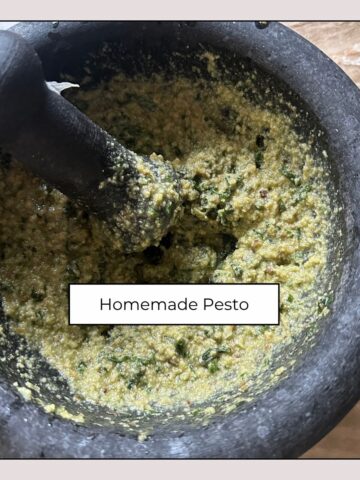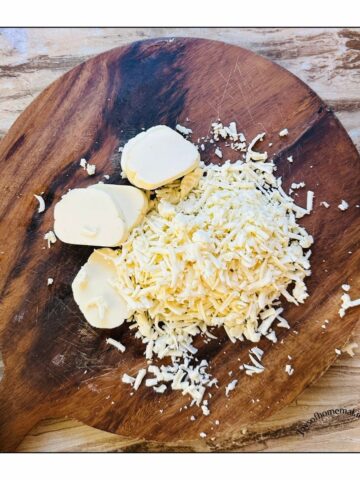For me, there is no rival to the magic of homemade bread. I love the feel of flour on my hands, the earthy smell of yeast in the air, and the quiet anticipation as the dough slowly transforms into something extraordinary. I love baking in the afternoon, letting the oven's warmth spill into the house, and finally sitting down with a rustic slice alongside a strong cup of dark coffee.
I have always been loyal to the soft, buttery dinner rolls—the kind that melt in your mouth. But lately, one bread has captured my heart: ciabatta.
This Italian classic is rustic, crusty, chewy, and full of character! It’s just as good torn apart and dipped into olive oil as it is paired with coffee. Sometimes I eat it plain, sometimes with my homemade cheese.
The beauty of ciabatta is that there’s no kneading involved. Instead, time does the hard work. With patience and a few simple ingredients, you can create this delicious bread in your kitchen.
What Is Ciabatta?
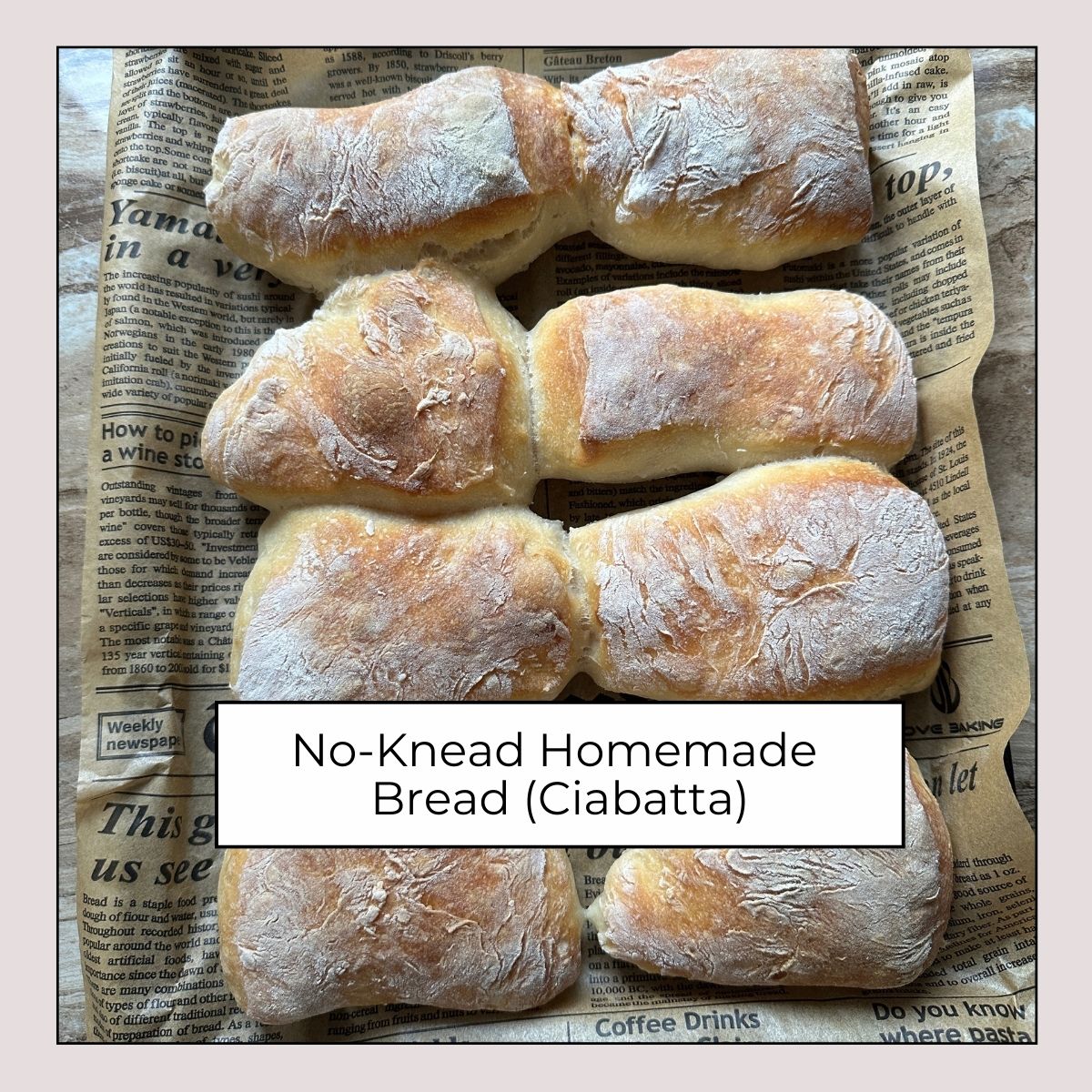
The word ciabatta means “slipper” in Italian, a nod to its flat, elongated shape. Unlike fluffy sandwich bread, ciabatta is rustic and irregular with a chewy texture, open crumb (those lovely air pockets!), and a crisp, golden crust. It’s the kind of bread that really feels handmade—because it is!
Why You'll Like This Recipe?
This recipe calls for a preferment, also known as biga. It is a traditional starter often used in Italian bread. Made simply from flour, water, and a pinch of yeast, it is left to ferment for at least 8 hours (or overnight) before being added to the main dough.
And yes, you can make ciabatta without a biga (I have tried it myself) but I wouldn’t recommend skipping it. The preferment adds incredible depth, giving the bread a more complex flavor, a fragrant aroma, and a beautiful, open crumb. It also strengthens the dough, making it easier to handle.
The only trade-off? Time. Using a biga means you’ll need to plan ahead because it requires hours to be ready. But trust me: the reward of a rustic, flavorful ciabatta is more than worth the wait!
Ingredients You’ll Need
Making ciabatta doesn’t require anything fancy. Here’s what you’ll need:
Biga / Preferment
- 1 cup bread flour (This bread flour is most recommended but I use any bread flour I can find in local stores here and it works just as fine.)
- ⅛ teaspoon of instant or active dry yeast - This is approximately 0.375 grams or about a pinch or two.
- ½ cup water
Ciabatta Bread
- 2 ½ cups bread flour – High-protein flour gives ciabatta its chewy texture.
- 1 teaspoons salt – Enhances flavor.
- 1 teaspoon or 3g instant or active-dry yeast – The magic that makes the dough rise.
- 1 cup water – Lukewarm, for activating the yeast.
- 2 tablespoon olive oil (optional) – Adds a hint of richness. Add 1 tablespoon to dough and another to your hands or spatula so the dough doesn't stick.
That’s it—just the essentials.
Step-by-Step Guide to Homemade Ciabatta
Day 1 : Prepare the preferment
Mix together the preferment. Cover and let it sit on the counter.
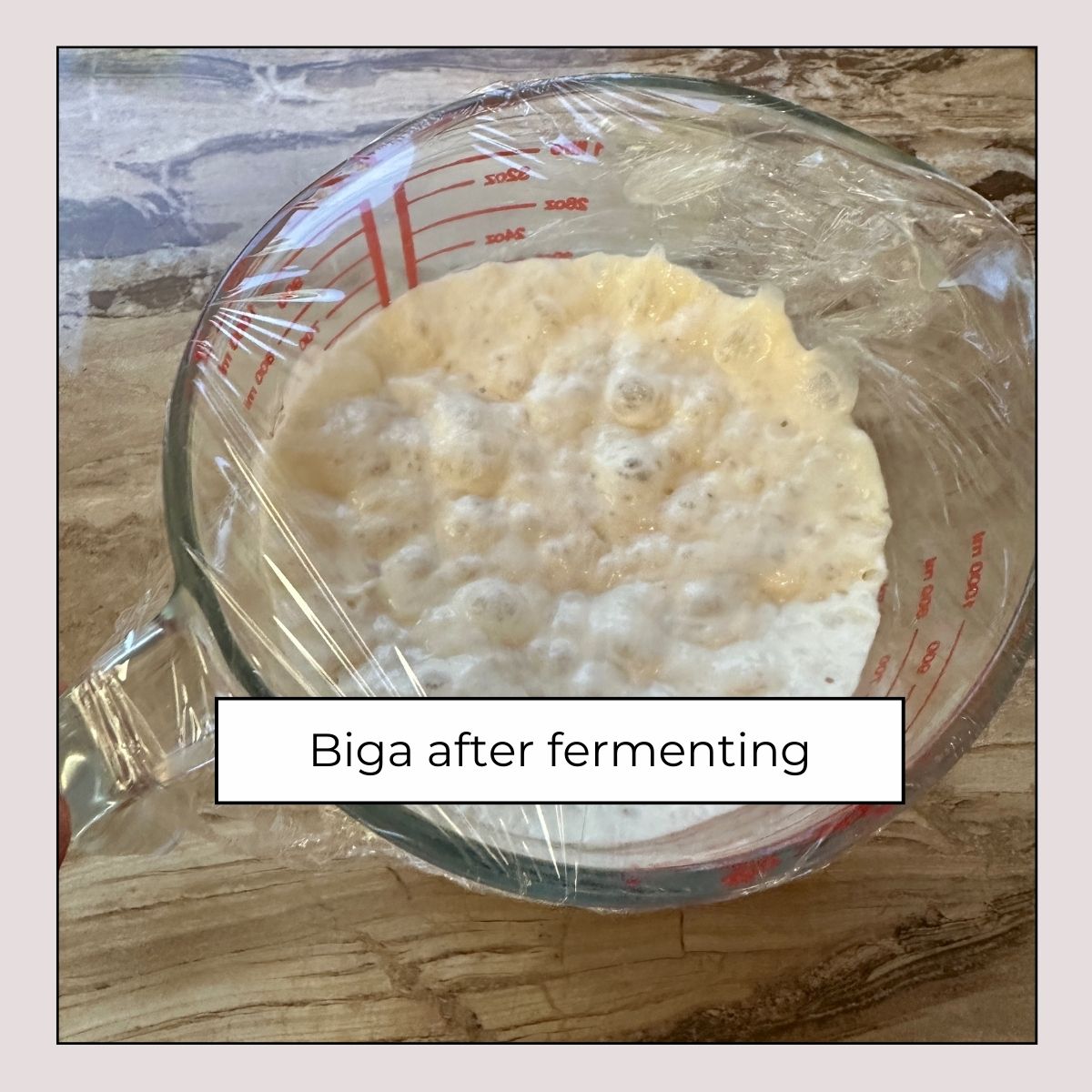
After at least 8-12 hours, the biga should be ready. In a large bowl, combine the water, yeast, olive oil, salt and the rest of the flour, stirring until a sticky dough forms. It's supposed to be shaggy. Don't worry--you don't need to knead it.
Day 2: Make the Dough and Bake
1. Combine the Ingredients.
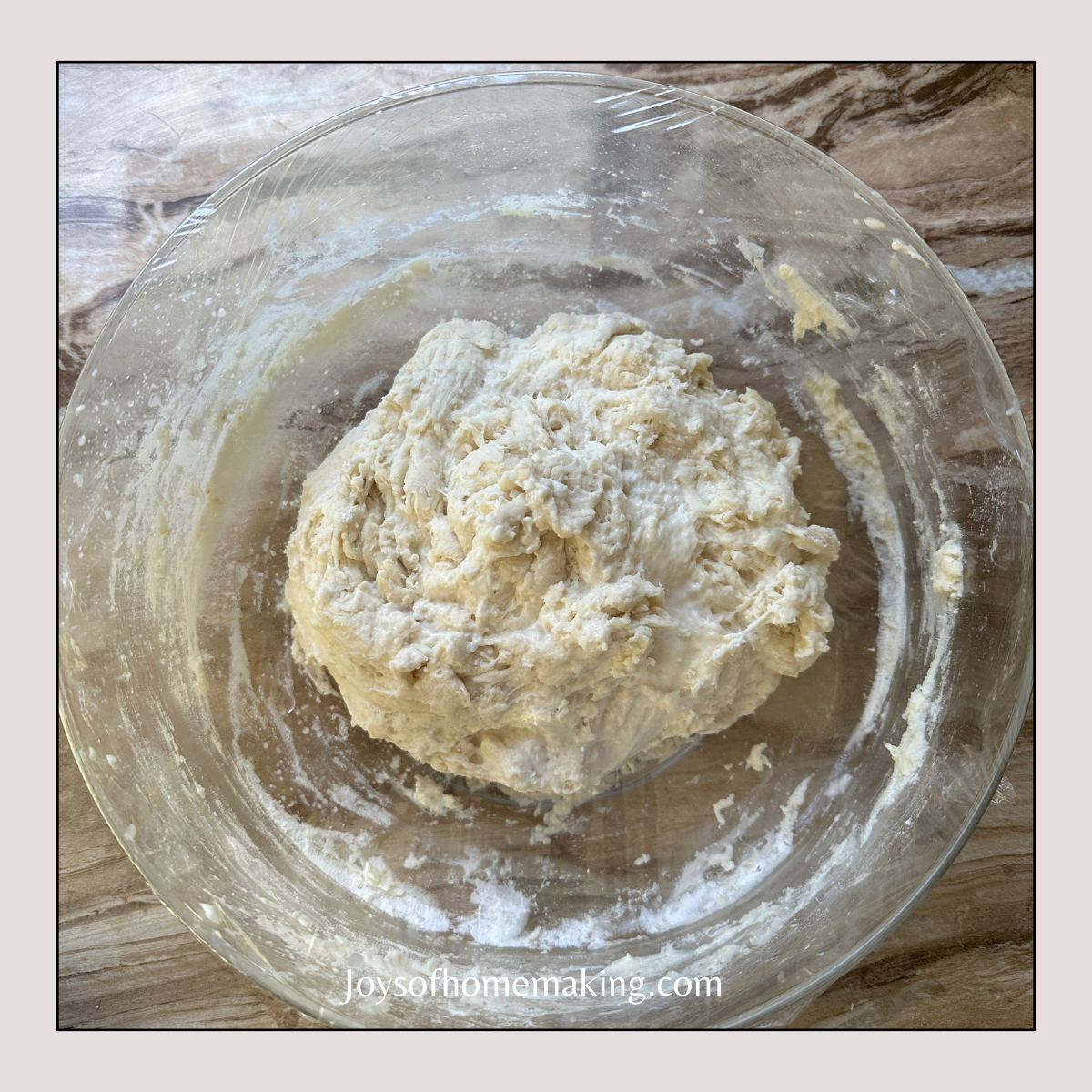
After at least 8-12 hours, the biga should be ready. In a large bowl, combine the water, yeast, olive oil, salt and the rest of the flour, stirring until a sticky dough forms. It's supposed to be shaggy. Don't worry--you don't need to knead it.
2. Let Time Work Its Magic
After mixing well the ingredients, cover the bowl a plastic wrap or damp cloth and let it rest at room temperature for 30 minutes.
The dough will become bubbly and double in size. This long fermentation gives ciabatta its wonderful flavor and open texture.
3. Stretch and Fold
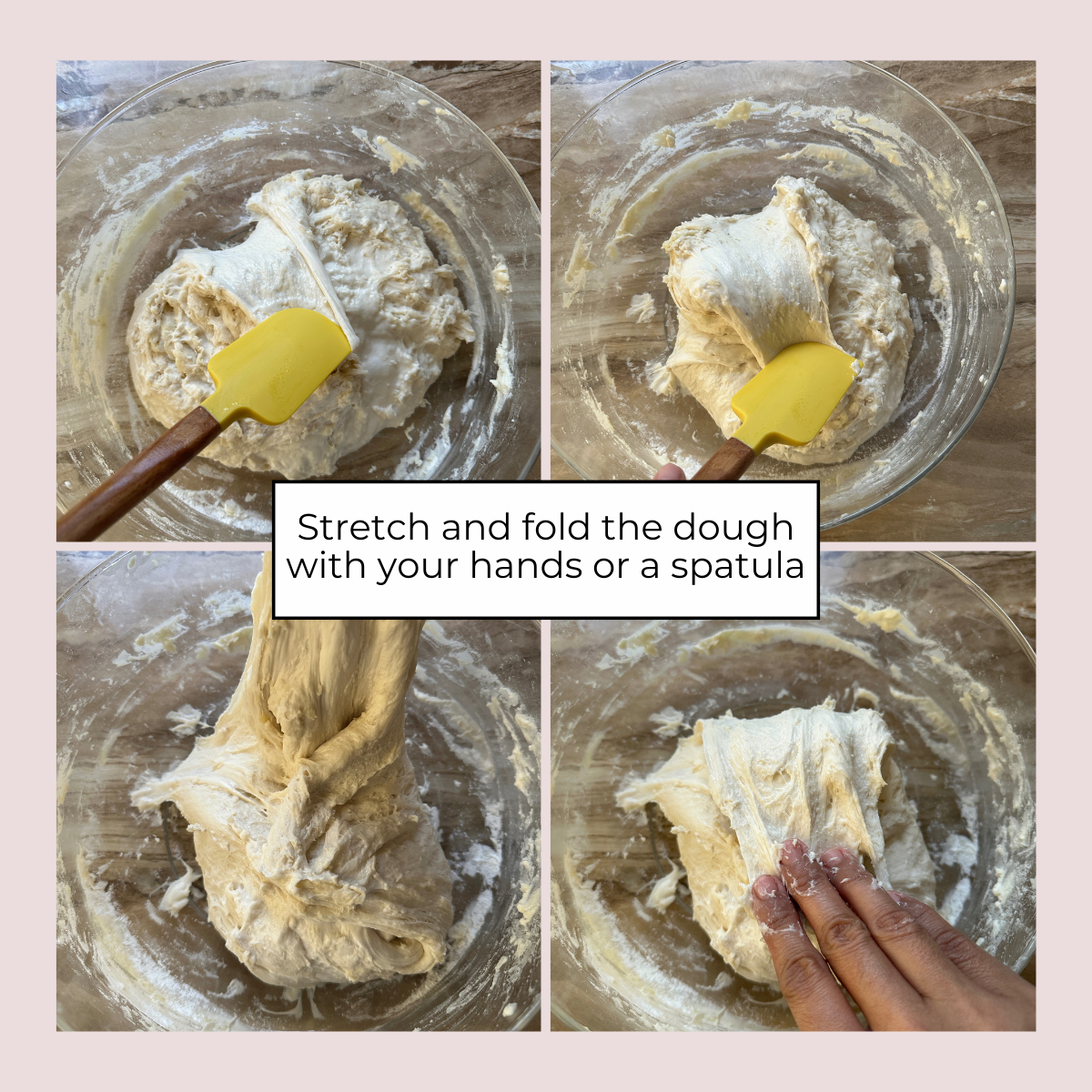
Instead of kneading, you’ll “stretch and fold” the dough. With oiled hands or spatula, gently pull up one side of the dough and fold it over. Turn the bowl a quarter turn and repeat. Do this until you’ve gone around the bowl twice, for a total of 8 folds.
Like kneading, the stretch-and-fold method helps develop the gluten network in dough, providing structure, elasticity and chewiness to the bread. The stretch-and-fold method, however, is a much gentler approach without overworking it.
Repeat the processs 3–4 times, letting the dough to rest for 30 minutes between each round. Keep it covered during rests to avoid drying out.
4. Shape the Rolls
Generously flour your work surface (ciabatta dough is sticky!). Turn the dough out carefully to avoid deflating it.
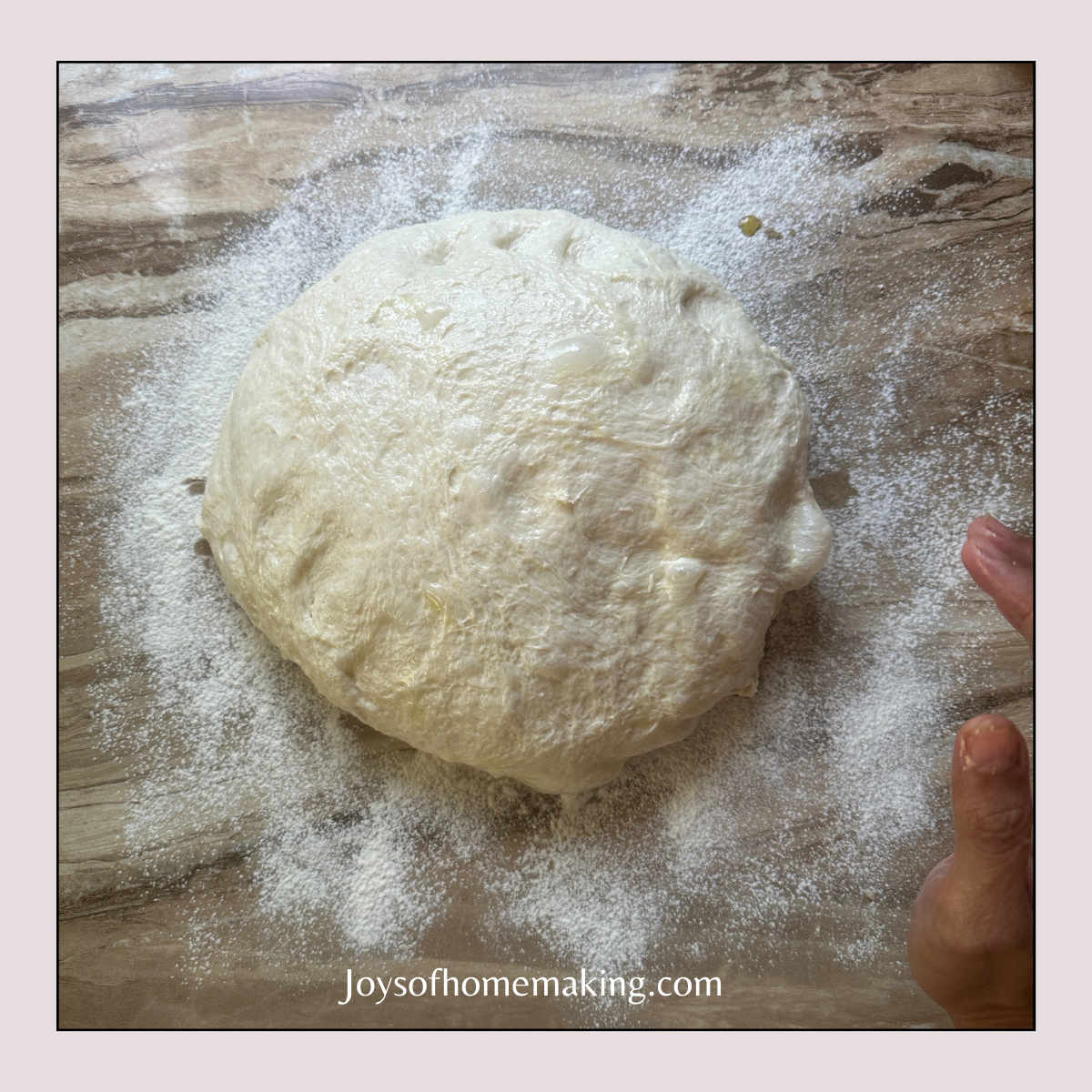
Carefully stretch the dough into a rectangular shape and divide it into 8 long, slipper-like rectangles. Place them on a parchment-lined baking sheet.
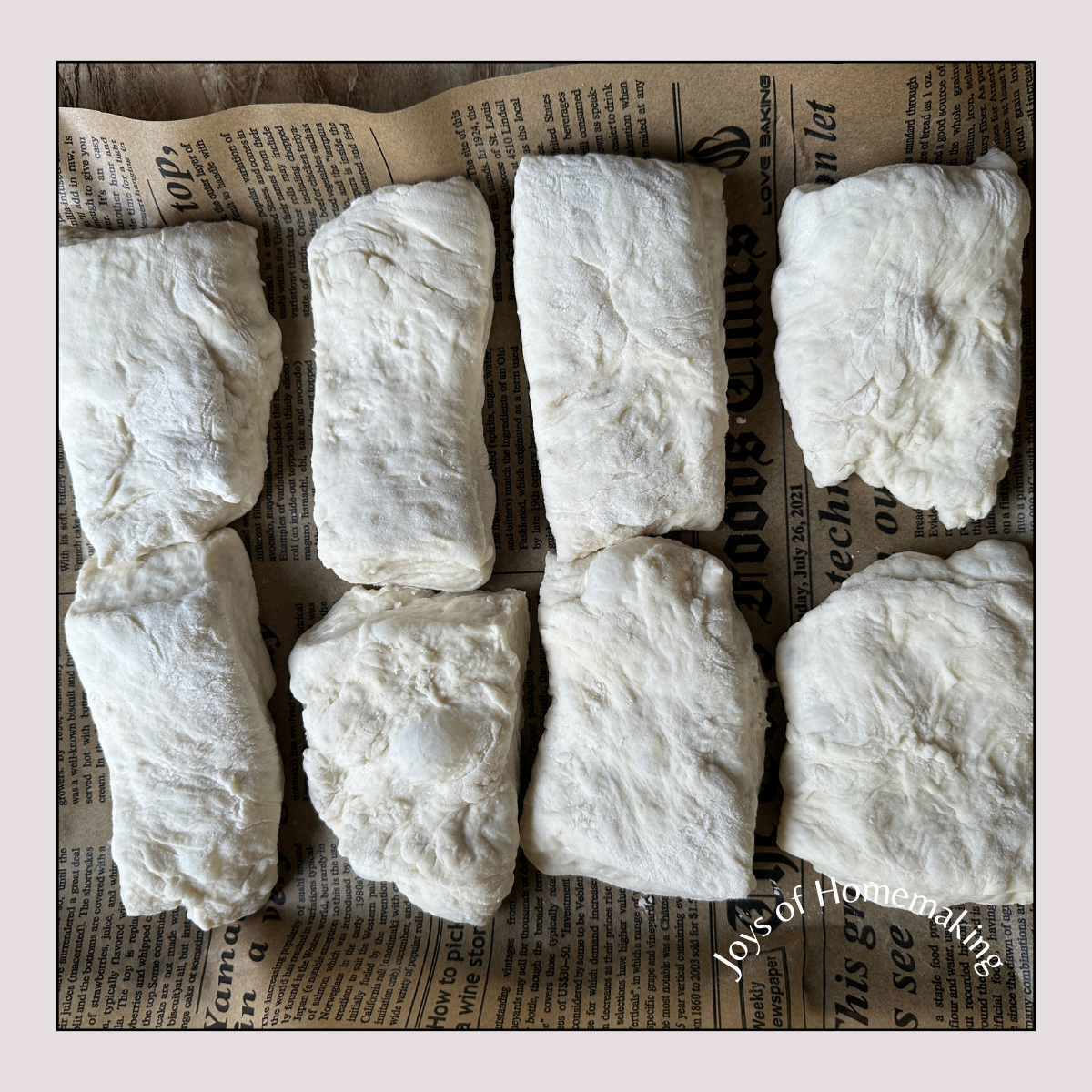
5. Final Proof
Cover loosely with a cloth and let the loaves rest for 30–45 minutes. They should puff up slightly.
6. Bake to Golden Perfection
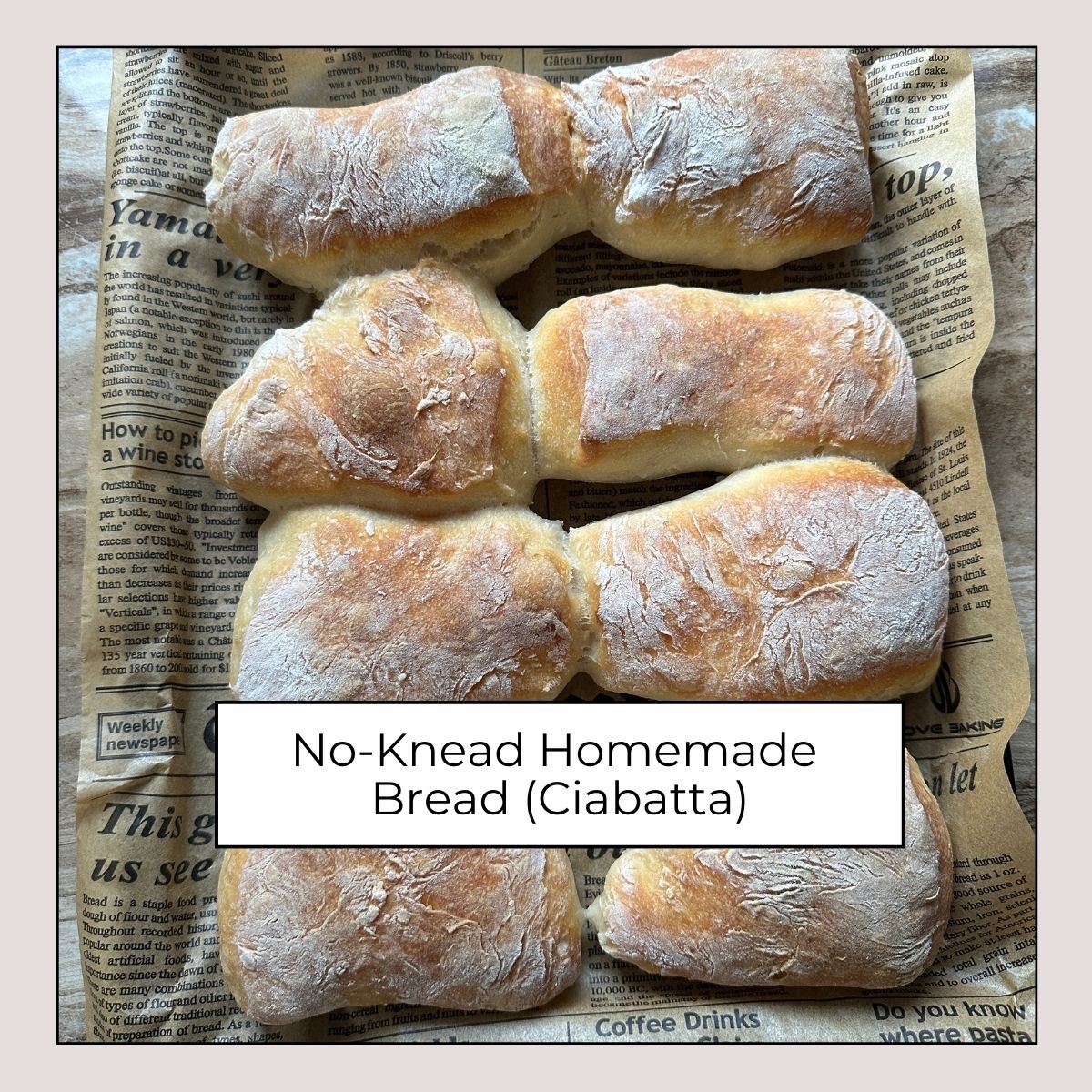
Preheat your oven to 450°F (230°C). Place a pan of hot water in the bottom of the oven to create steam—that’s what gives ciabatta its crisp crust. Bake the rolls for 20–25 minutes, until they’re golden brown and sound hollow when tapped.
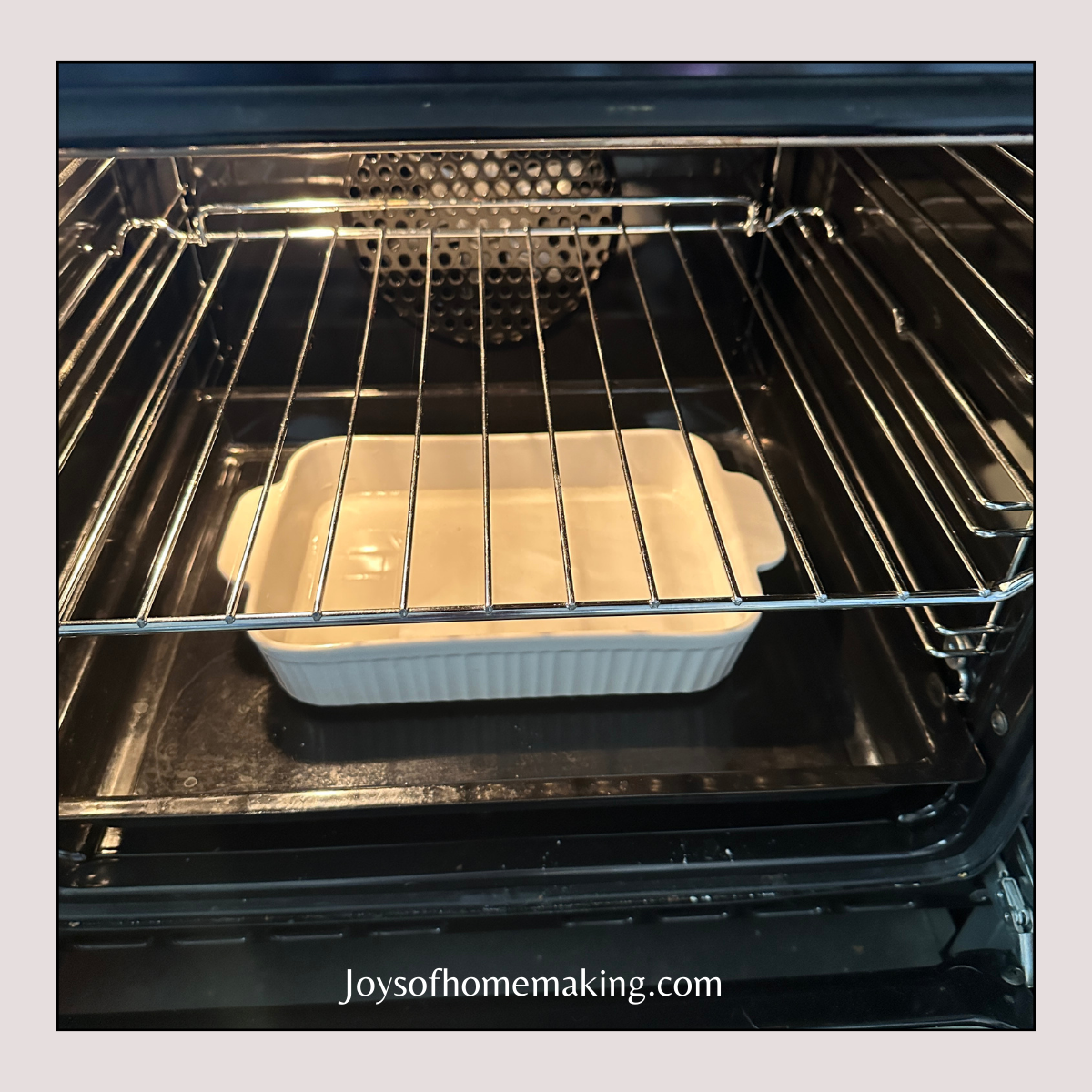
Tips for the Perfect Ciabatta
- Hydration is key – Ciabatta dough is wetter than most breads, which is what creates those big airy holes. Don’t add too much extra flour, even if it feels sticky.
- Use a baking stone (if you have one) – It helps create that rustic crust.
- Be patient – The waiting time is part of the process. The slower the rise, the better the flavor.
- Enjoy simply – Tear off a piece and dip it in olive oil, pair it with cheese, or eat it plain with coffee.
- Add herbs - You can flavor this bread with herbs such as fresh or dried rosemary, basil or parsley. You can add herbs or spices in step 1 when mixing the ingredients with the biga.
Ciabatta Bread FAQs
Can I Use This Dough for Focaccia? Yes! Simply grease a baking pan with olive oil. Flip to coat all sides in the oil. Carefully stretch the dough to fit the pan, sprinkle your toppings, and bake!
Can I Use This Dough to Make Sourdough Bread? Not quite. Since this recipe relies on commercial yeast and a biga preferment, it’s best to follow a dedicated sourdough ciabatta recipe if you’d like to use a natural starter instead.
Final Thoughts
Homemade ciabatta may look rustic and imperfect, but that’s exactly what makes it special. It doesn’t need to be flawless to taste incredible. With its chewy crumb, crusty exterior, and soul-warming aroma, it’s a bread that feels alive.
So the next time you have an afternoon free, try making ciabatta. Brew yourself a pot of dark coffee, tear into a loaf still warm from the oven, and savor the magic homemade bread can bring.
Ingredients
Method
- Day 1 : Prepare the prefermentMix together the preferment. Cover and let it sit on the counter. After 8-12 hours, the biga should be ready.
- Combine the IngredientsIn a large bowl, combine the water, yeast, olive oil, salt and the rest of the flour, stirring until a sticky dough forms. It's supposed to be shaggy.
- Let Time Work Its MagicAfter mixing well the ingredients, cover the bowl a plastic wrap or damp cloth and let it rest at room temperature for 30 minutes.The dough will become bubbly and double in size. This long fermentation gives ciabatta its wonderful flavor and open texture.
- The dough will become bubbly and double in size. This long fermentation gives ciabatta its wonderful flavor and open texture.
- Stretch and Fold Instead of kneading, you’ll “stretch and fold” the dough. With oiled hands or spatula, gently pull up one side of the dough and fold it over. Turn the bowl a quarter turn and repeat. Do this until you’ve gone around the bowl twice, for a total of 8 folds. Repeat the processs 3–4 times, letting the dough to rest for 30 minutes between each round. Keep it covered during rests to avoid drying out.
- Shape the Rolls Generously flour your work surface (ciabatta dough is sticky!). Turn the dough out carefully to avoid deflating it. Carefully stretch the dough into a rectangular shape and divide it into 8 long, slipper-like rectangles. Place them on a parchment-lined baking sheet.
- Final Proof Cover loosely with a cloth and let the loaves rest for 30–45 minutes. They should puff up slightly.
- Bake to Golden Perfection Preheat your oven to 450°F (230°C). Place a pan of hot water in the bottom of the oven to create steam—that’s what gives ciabatta its crisp crust. Bake the rolls for 20–25 minutes, until they’re golden brown and sound hollow when tapped.

